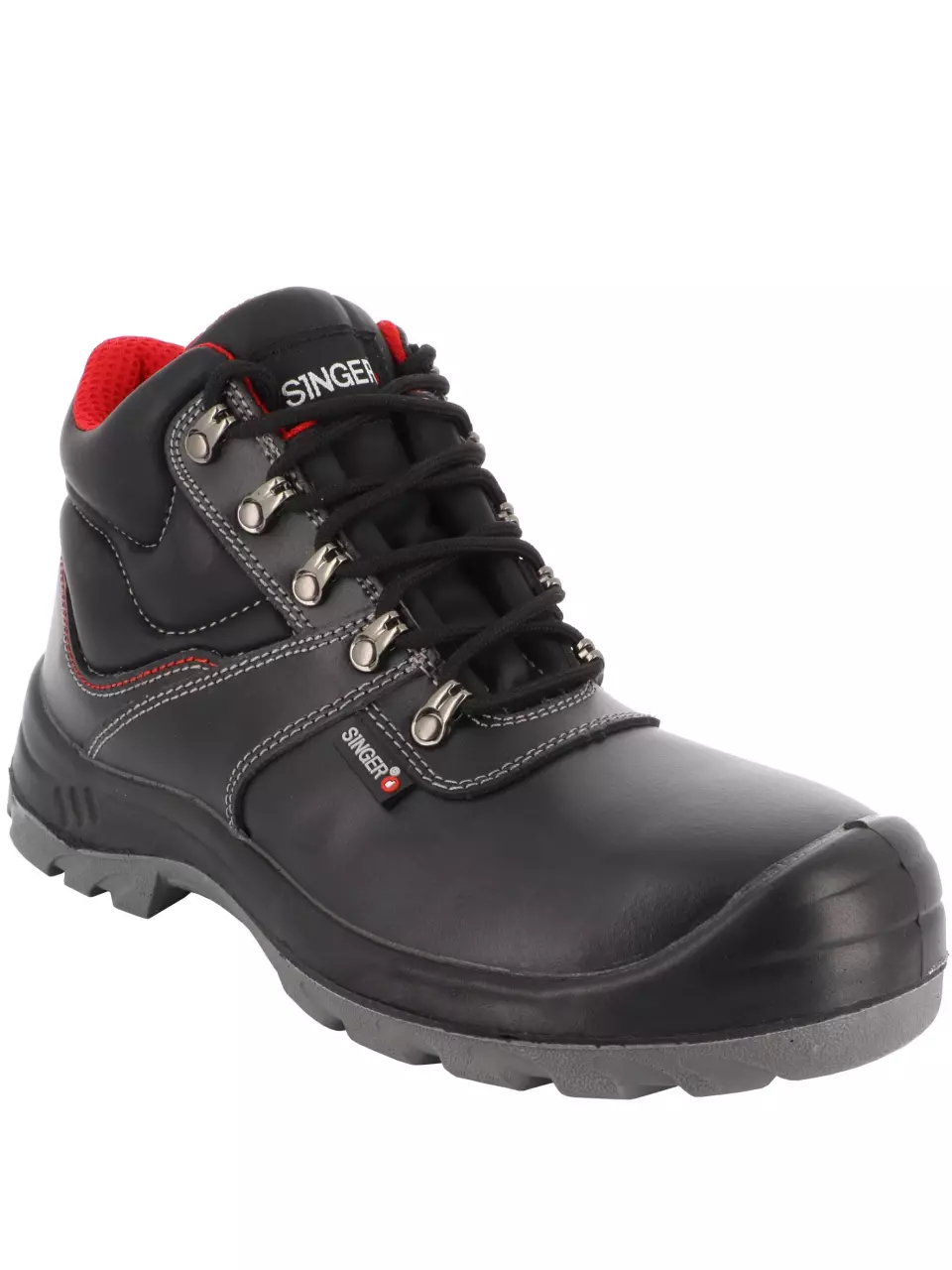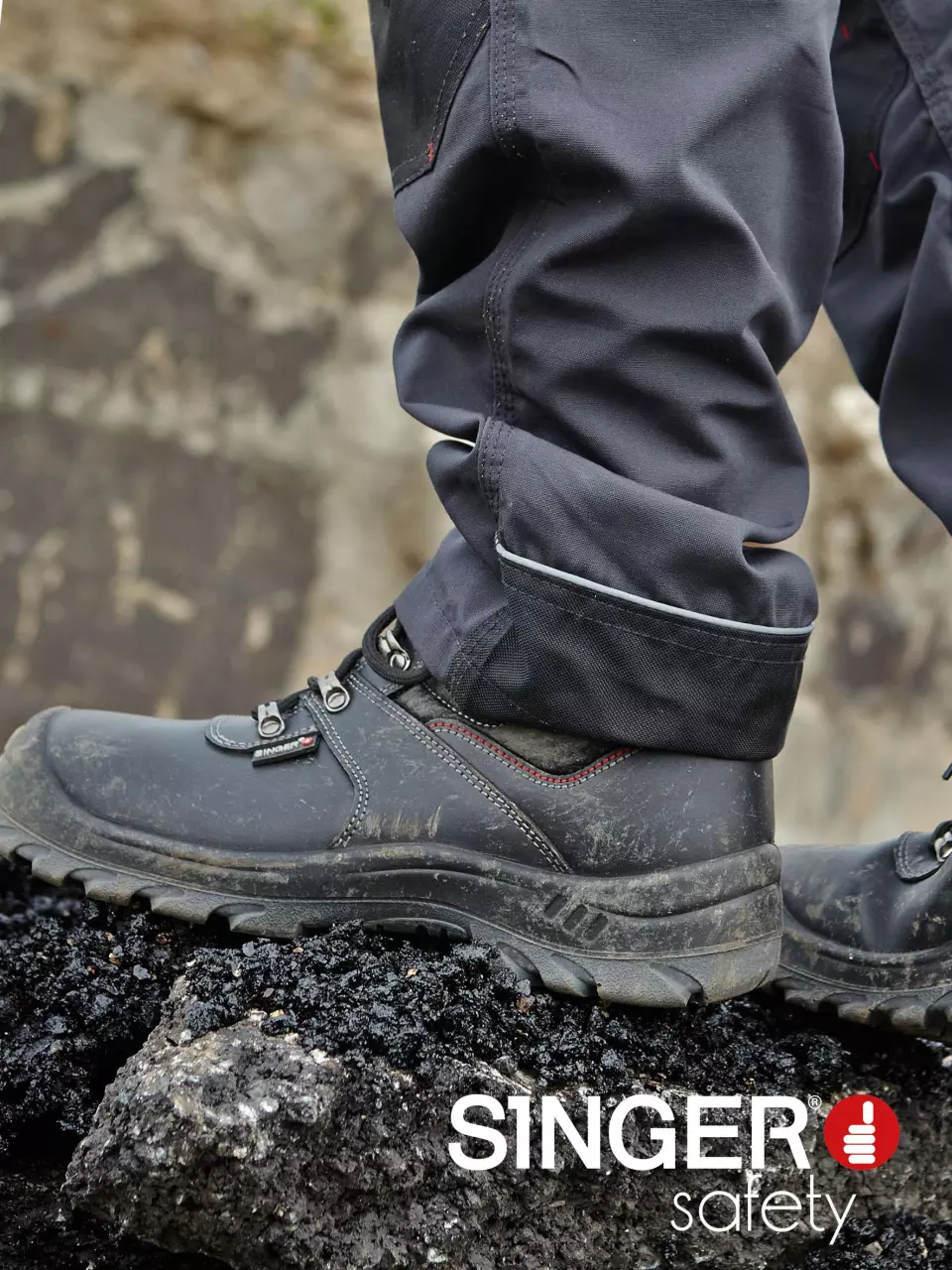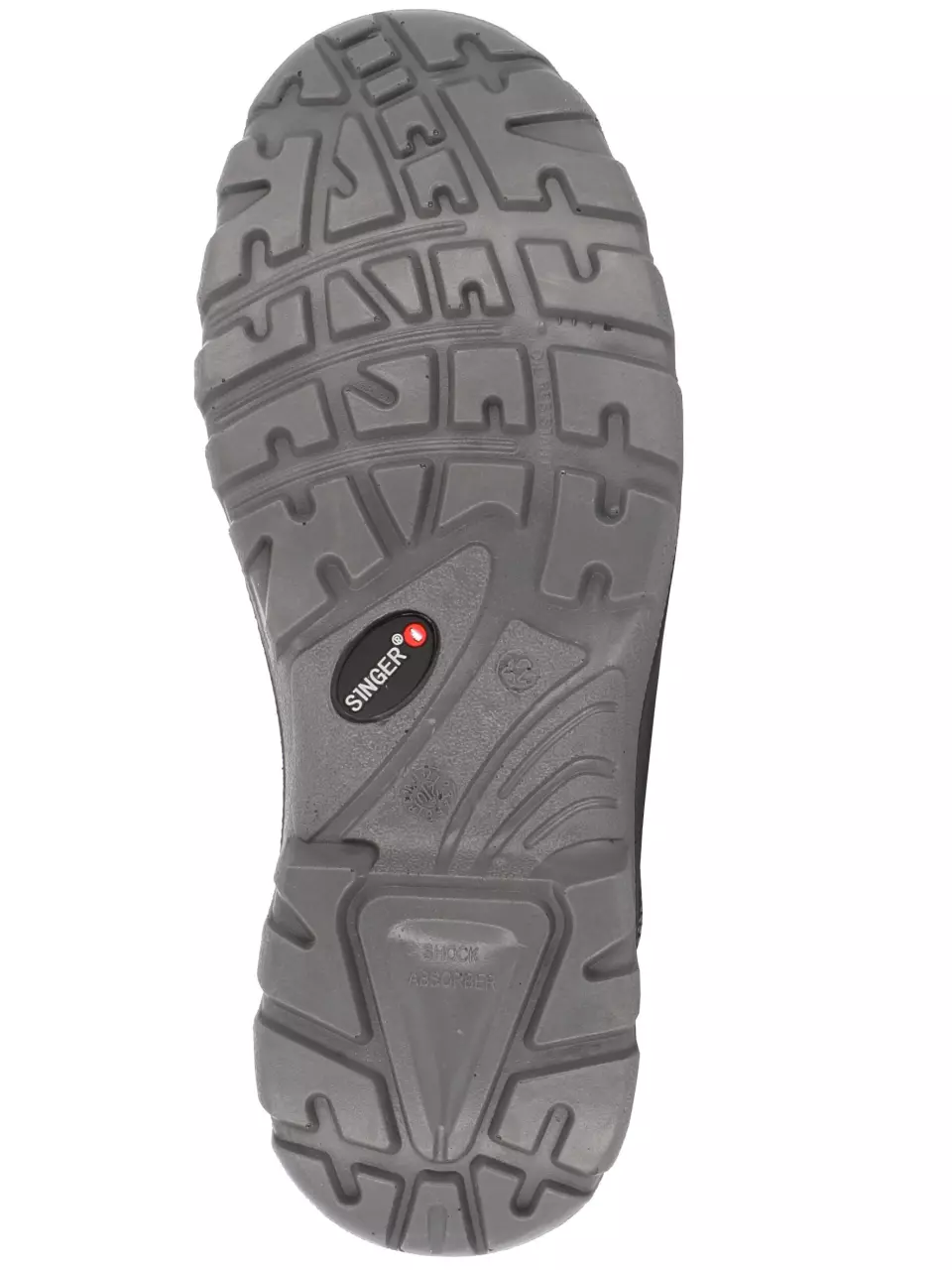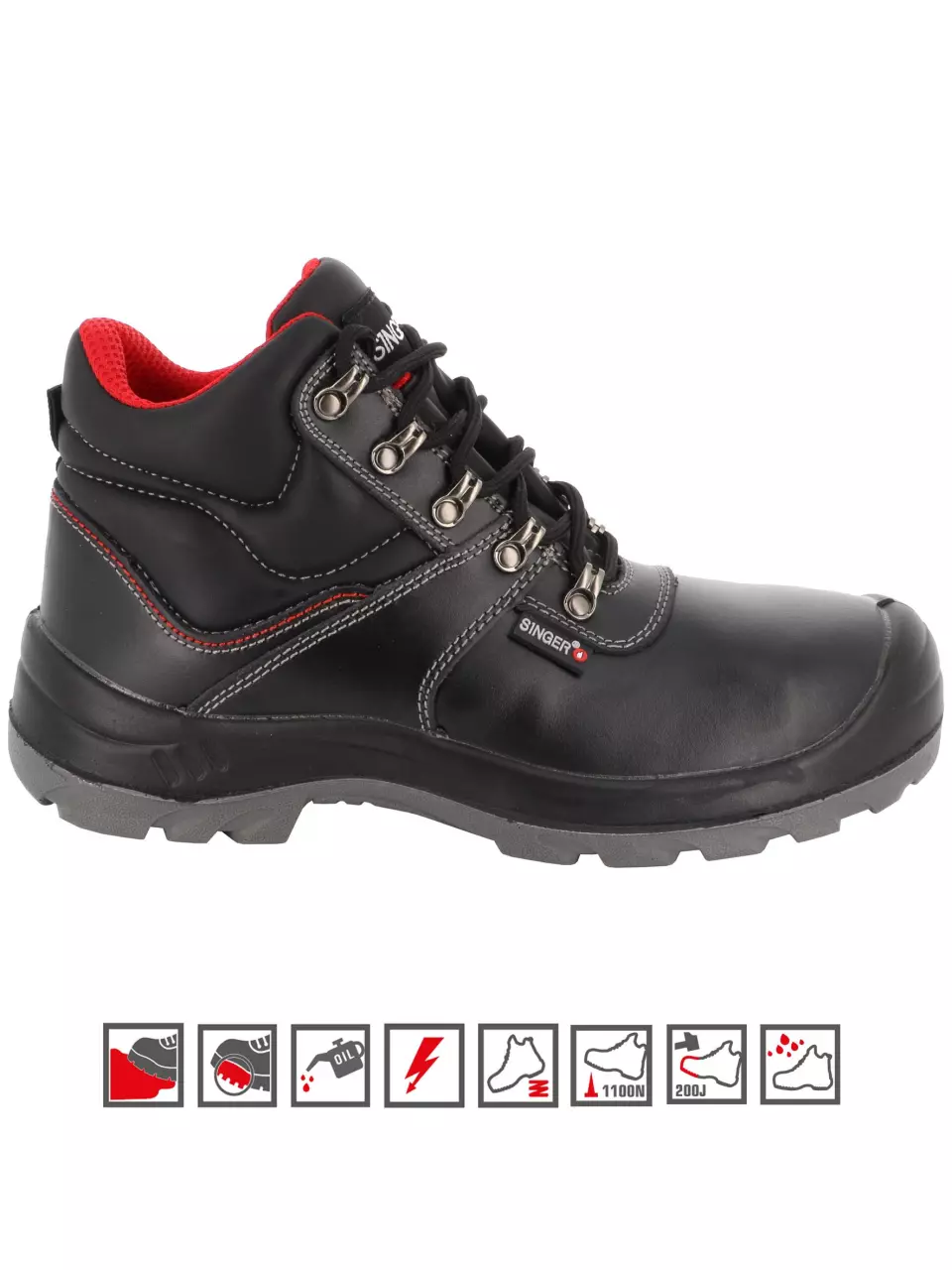Singer Safety High Safety Shoe, S3L
SINGER Safety
visit storeProduct description
These high cut safety shoes provide superior protection for demanding work environments with their water repellent full grain leather construction and composite 200J toe cap. Featuring a high strength textile puncture resistant midsole and double-density polyurethane injected sole, they meet EN ISO 20345:2022 S3L FO SR standards for comprehensive foot protection. The shoes combine safety with comfort through their perforated, antistatic EVA insole and ergonomic design with three flex zones for optimal flexibility.
Product Features:
- Water repellent full grain leather upper for durability
- Composite 200J toe cap for impact protection
- Gusset tongue to prevent debris entry
- Metal hooks fastening system for secure fit
- Perforated, antistatic and removable EVA insole
- High strength textile puncture resistant midsole
Technical Details:
- Double-density polyurethane injected sole
- Weight: 680 g (size 42)
- Three flex zones on the sole for optimal flexibility
- Energy absorbing heel for impact reduction
- ISO 9001 certified manufacturing
Standards:
- EN ISO 20345:2022 S3L FO SR certification
- Complies with European Regulation (EU) 2016/425 on PPE
- Category II certification by CTC (France), Notified body n°0075
Recommended Applications:
- Structural work
- Finishing work
- Public works
EAN: 3660514210172, 3660514210196, 3660514210219, 3660514210233, 3660514210257, 3660514213708, 3660514210271, 3660514210295, 3660514210318
Identifies the protective material in the toe cap that shields against impacts and compression. Different materials offer varying levels of protection, weight, and comfort.
The color of the shoe's bottom surface that affects visibility in low-light conditions, complements uniform requirements, and reflects personal style preferences.
The method used to secure the shoe to your foot, affecting ease of putting on/removing, adjustability for comfort, and workplace safety.
Indicates whether the footwear has protective reinforcement (Safety) or no special toe protection (Plain), affecting workplace safety compliance and injury prevention.
Offers robust defense against underfoot hazards. A reinforced sole prevents sharp objects from piercing through, protecting feet in risky environments.
Reduces impact on feet and joints, lessening fatigue during long hours on hard surfaces. Provides enhanced comfort for demanding work environments.
Enhances stability on slick surfaces, reducing the risk of slips and falls. Designed for reliable grip and secure footing in various work environments.
Withstands degradation from oil exposure, maintaining sole integrity and extending shoe life. Ensures reliable traction in oily environments.
The material composition of the shoe's bottom portion that determines slip resistance, durability, and protection against workplace hazards like chemicals, heat, or punctures.
- Slip Resistant
- Water Resistance
- Electrical Protection
- Impact Resistance
Request a free sample
Test first and buy later. Visit any product page to request your free sample.
Standards and labels
Test results
General Requirements CRThe standard EN ISO 20345:2011 encompasses general requirements for safety footwear to ensure they provide adequate protection in various occupational environments. Rating 'CR' signifies that the footwear has a cut resistant upper ensuring enhanced protection. The test method involves assessing the material's resistance to splitting or cracking under certain conditions, which simulates real-world industrial hazards involving sharp objects or surfaces. Practically, this result ensures that the footwear is suitable for environments where there is a risk of materials splitting or getting caught, thereby providing essential safety benefits to the user.
General Requirements FOThe standard EN ISO 20345:2011, specifically its General Requirement FO, pertains to footwear containing fuel oil-resistant outsoles. When footwear under this specification successfully meets the FO requirement, it implies that the footwear's outsole has been tested and confirmed to resist degradation due to contact with fuel oil. The test involves exposing the outsole material to fuel oil for a determined period, typically 22 hours, at a controlled temperature of 22°C. This test assesses the change in volume and properties of the outsole following fuel oil exposure by measuring its tensile strength and elongation before and after the exposure. For procurement professionals, a positive FO result indicates that the footwear's outsole will maintain its mechanical performance and integrity when in contact with fuel oil, making it suitable for industries where oil exposure is frequent, providing durability and reliable performance under such conditions.
EN ISO 9001:2015 is a standard that sets out the requirements for a quality management system (QMS). It is a set of guidelines that organizations can follow to ensure that they meet customer requirements and enhance customer satisfaction. The standard is based on the plan-do-check-act model and focuses on continuous improvement. It covers the design, development, production, installation, and servicing of products. Organizations can get certified to this standard, which means that they have been independently audited and found to meet the requirements of the standard. The certification process includes regular audits to ensure that the organization continues to meet the standard's requirements.
Test results
Service Reliability PassedTextiles are materials made from fibers, such as cotton, wool, or polyester. In Europe, there are rules for how textiles should be made, sold, and labeled. These rules are set by the European Union. These rules ensure that textiles are safe and do not contain harmful chemicals, that they are labeled correctly and that the use of certain dangerous chemicals are banned. These rules are set to protect the health and safety of consumers and the environment. Companies that make or sell textiles in the EU must comply with these rules.
PPE stands for "personal protective equipment." PPE Category 2 refers to equipment that is more complex, and has a higher level of risk. Examples of PPE Category 2 include safety helmets, ear protection, and fall arrest equipment. In Europe, PPE Category 2 must meet certain safety standards set by the European Union, which means that it must be designed and manufactured to protect the user without causing harm. Companies that make or sell PPE must prove that it meets these standards. They also must have a quality management system in place and have to be audited regularly by a notified body.
CE Marking is a label that shows a product meets certain safety and environmental standards set by the European Union. To get the CE Marking, a company must test and certify their product meets these standards. CE Marking is required for many products sold in the EU, including electronics, machinery, toys and medical devices. It helps ensure that products are safe for consumers and the environment, and allows for easy trade within the EU.
SINGER Safety delivery terms
Free delivery when you order more than 150,00 € from SINGER Safety
Supplier shipping fee 6,33 €
Brand minimum 200,00 €
37,61 €
Shipping fee is 6,33 € for orders under 150,00 €
Sold in units of one pair
Need larger quantities?
Other products you may like
Recently viewed
Need help?
Get help from our experts
Other products you may like
Similar products you may like
Recommended for you
SINGER Safety
Delivery time: 5 business days
Orders from 200,00 €
Supplier shipping fee 6,33 €
Free shipping on orders over 150,00 €

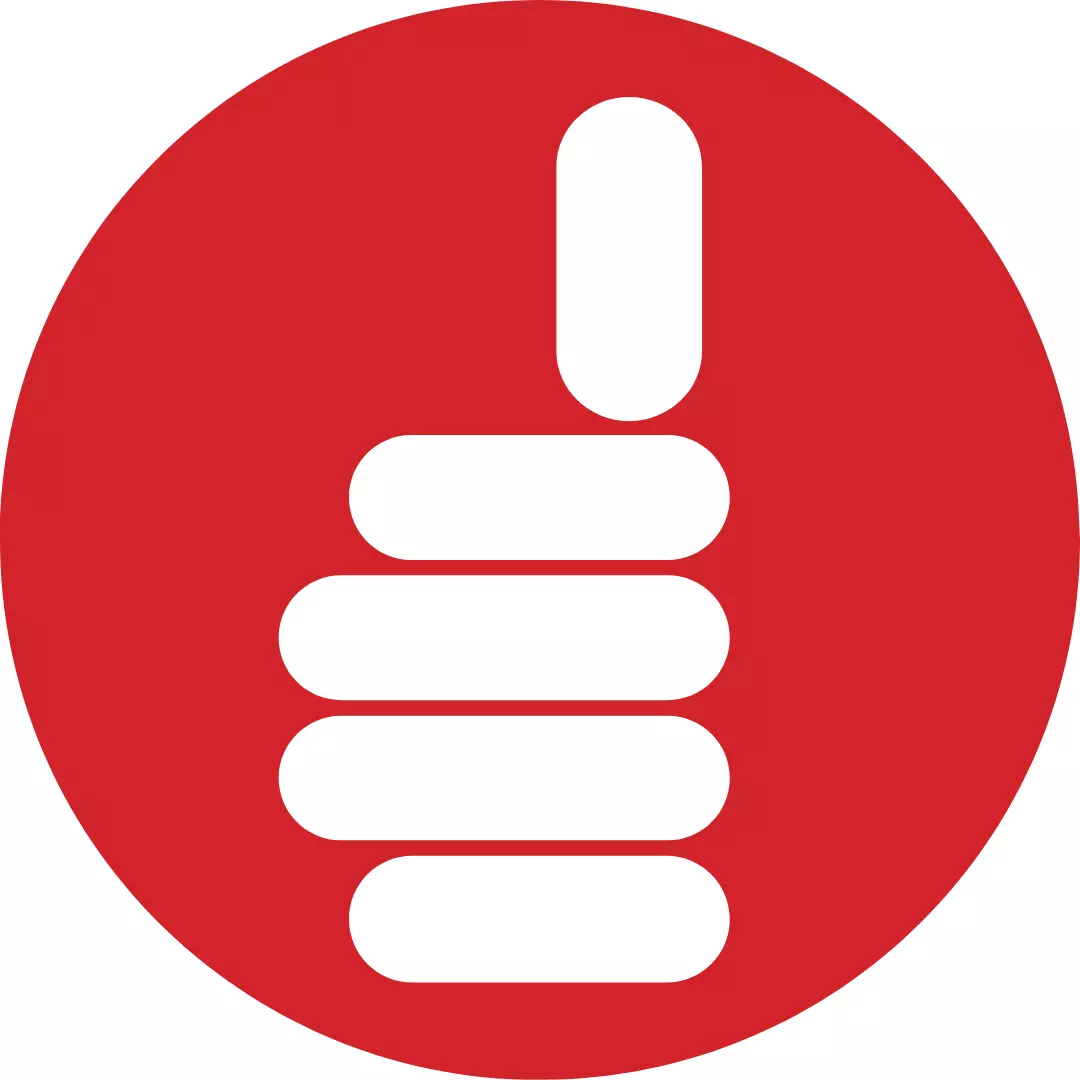

Find +150,000 products from hundreds of brands
Autonomous sourcing platform
The most efficient way to source and order supplies for your operations
Sourcing
Ordering
List products you’re looking for and we’ll find the best products and prices for you – all for free.
Need help?
Get help from our experts
